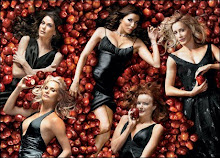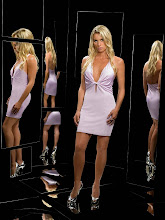Critical Investigation: An investigation into the negative representations of black people in the advertising media. What are the contexts that seem to reinforce these stereotypes?
In this essay it will look into the investigation into the negative representations of black people in the advertising media. Black people are not shown that often when participating in the advertising media. My hypothesis therefore is to study the invisibility of black people in the advertising media and the under-representation of them in the advertising media.
“To advertise originally meant ‘to draw attention to something’ or to notify or inform someone or something” (Dyer 1982). 1. Advertising was first broadcasted as a television advert on July 1, 1941. As a result the advertising media has been very successful till this day. However there have been many complaints when the advertising media has been in control, this could be due to ethnicity, gender or age. This essay will mainly be focusing on the complaints within the ethnicity area of advertising.
The essay will be focusing on the black ethnicity and how they are portrayed in the advertising media. " Black people have largely been portrayed as part of the mainstream middle class, which does not accurately reflect the lives of many blacks who find themselves excluded from such a life in advanced capitalist societies",2. This quote could be quoted wrong as the quote is not actually true, due to the media portraying black people as part of the working class society and therefore this quote allows me to show focus on the black culture in today's society and how they are stereotyped throughout the advertising media.
Stuart Hall is a cultural theorist and sociologist. Hall's work covers issues of hegemony and cultural studies.
In addition to this a quote states that: “Advertising promotes unrealistic and dangerous role models". 3. There are many examples of this. Firstly a cartoon advert of Obama in Russian ice cream ad is being called racist. Matthew Creamer states that “This isn’t the first time President Barack Obama’s image has been exploited in international advertising”. 4. This quote shows that even though Barack Obama is a positive black man the advertising institution is still being very racist towards a positive black man. “These images of people are part of the attraction of the advertisement-and it needs to attract attention rapidly”. 5. This quote shows that the advertising institution must advertise products or adverts that will be eye-catching to the viewer and that the persuasion of the advert to the audience is at a high standard.
From the beginning of slavery in the seventeenth century, to the present day black people have fought not only for their freedom but to be understood and respected for their unique and cultural contributions. “Microsoft photoshopped a black man out of one of its ads targeting the Polish market”. 6. This quote states that black people in the advertising media once again are not being shown as positive individuals. In addition to this, the quote shows that even with The Public Order Act of 1986 black individuals are still getting racially attacked in the advertising media. The Public Order Act is when no one can make it an offence to publish anything which stirs up racial hatred, whether or not it is intended to.
Moreover, an American newspaper had published a cartoon image of a cartoon that portrays Ohio State Senator Nina Turner as Aunt Jemima. Stanley Miller, executive director of the Cleveland NAACP civil rights organization quoted that: "It was disturbing to me," he said.Miller said he's not upset about the politics behind the cartoon and accompanying editorial, but by the negative stereotype that dates back decades. 7.
This quote and advertisement shows that this advert being argued against is very upsetting towards Nina Turner. Also the use of the article being from America shows that the use of different countries in the essay shows the diversity of racism in advertisements across world.
Nevertheless "blacks now appear quite often in commercials, although not in the same proportion as in the total population". 8. This quote shows a more positive view to the invisibility of black people in the advertising media, black people now do participate in the advertising media, however this could be argued against due to them not having as much participation as say the white ethnicity will have.






